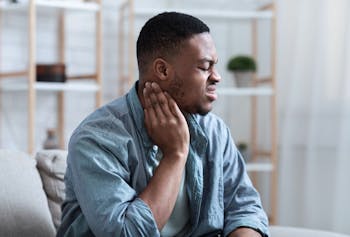By: Jill Phelan, PT, DPT, Cert. DN

I hate to say it, but pain is normal through the course of our life. It can be sharp and short-term from whiplash or stubbing our toe or it can be dull and more constant when your back is hurting first thing in the morning. Varying pain levels and qualities are your body's way of alerting you to either actual or potential risk of tissue damage. Pain becomes a consistent, lasting problem when symptoms remain unchanged despite failed intervention tactics (i.e., rest and Tylenol/Ibuprofen), persists longer than expected healing time and ultimately begins to affect and alter one's lifestyle and function.
Pain is an "output" and requires the brain's interpretation to be perceived. First, the possible injury must be signaled up the ladder to the brain to be identified. Peripheral sensitization then occurs or goes into "protection mode," causing your body to be heightened in its response to stimuli (think…sensitivity to light touch or even minimal movement). Lastly, the brain assesses the threat level and begins to decrease the pain rating with time. When it comes to chronic pain, there tends to be altered sensory processing in the brain with malfunctioning of descending pathways. Meaning the signal does not begin to become reduced in a timely fashion and pain continues.
Pain can also be three main types of pain: nociceptive, peripheral neurogenic and central sensitivity. Nociceptive pain is localized to an area of injury, with clear aggravating and easing factors such as when you sprain your ankle. Peripheral neurogenic is associated with a history or evidence of nerve injury or pathology, like sciatica or carpal tunnel. Central sensitivity is a little more complicated and associated more so with chronic pain sufferers. There tends to be a variable quality of pain, fear avoidance with certain activities, possible onset of anxiety and/or depression and pain can often be perceived as uncontrollable.
So, let's get to the good part! Based on an individual's pain presentation, physical therapists can try multiple approaches in an attempt to reduce and hopefully abolish one's pain so that he or she can complete his or her normal daily activities. We at PRS use a blended approach depending on the patient (as it should be!) for optimal experience and response. Whether it be pain management modalities (ice, heat, electrical stimulation), exercise and activity modification or manual therapy techniques (spinal manipulation, joint mobilization, dry needling, ART, IASTM), patients can also benefit from education to further understand the biology behind the pain that culminates in four main concepts:
- Pain does not provide a measure of the state of the tissue.
- Pain can be modulated by many factors across many domains, not just physical sources. Stress and outside environmental factors play a big role too!
- The relationship between tissue state and pain becomes weaker as pain persists.
- Pain does not always mean there is tissue damage.
Every individual is different as is their pain. We, as physical therapists at Professional Rehabilitation Services, treat each and every patient with an impairment-based approach, meaning the focus of each patient's care is centered around their own specific limitations and restrictions.
So, if you or someone you know is having musculoskeletal pain and would like to know more about physical therapy options for chronic pain, seek a free 15-minute consultation with a physical therapist at one of our 9 locations or see your physician for a referral to one of our facilities. For further information on this or other related topics you visit our website at www.prsrehabservices.com where you can learn more about our company!
